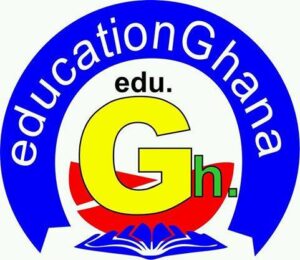
Ferdinand | EducationGhana | June 11 | Ghana’s 2025 Education Budget: Progress or Regression? A Contextual Analysis Across Education Levels
Author: Ferdinand Ellis
Email: Ellisferdinand@ymail.com
As Ghana’s 2025 education budget is released, its allocation across different educational levels demands deeper scrutiny. This analysis situates Ghana’s expenditure within historical, African, and global contexts to assess whether the new allocations represent strategic progress or a missed opportunity.
- Basic Education: A Modest Uplift with Inadequate Historical Traction
The increase in basic education’s share to 22% in 2025, up from 19.4% in 2023–2024, appears promising on the surface. However, historical allocations tell a different story. Between 2010 and 2015, basic education received an average of 46% of total education expenditure (Eduwatch, 2025, unpublished). The consistent underfunding in recent years contradicts global and African best practices. UNESCO recommends allocating at least 45–50% of education budgets to basic education to ensure foundational literacy and numeracy (UNESCO, 2015).
In countries like Rwanda, sustained investments in basic education have led to significant literacy gains and youth development (World Bank, 2020). Without consistently prioritizing basic education, Ghana risks compounding the learning poverty crisis and further entrenching educational inequality.
- Second Cycle Education: Growing Share, Growing Responsibilities
The jump in second cycle education’s budget share from 20.4% in 2022 to 28.2% in 2025 signals government commitment to sustaining Free SHS and expanding access. While commendable, such expansion without equivalent investments in basic education creates systemic imbalances. According to MoE Ghana (2023), SHS enrollment has increased by over 40% since 2017, but quality issues persist, including teacher shortages and infrastructure gaps.
South Africa’s second cycle reforms succeeded because they were built on robust basic education and consistent curriculum support (Spaull, 2019). Ghana must ensure that secondary gains do not outpace foundational readiness, or the result will be bloated upper-level enrollment with weak academic preparation.
- Tertiary Education: A Strategic Decline or a Policy Oversight?
Tertiary education’s allocation decline to 23.9% in 2025, from 29.7% in 2022, raises concerns about sustaining higher education quality and research. While aligning with global equity trends (OECD, 2022), this reduction must be offset by increased internally generated funds (IGFs) and stronger industry partnerships.
Ghana’s tertiary enrollment continues to expand, with over 500,000 students across public and private institutions (GTEC, 2024). If public support wanes, quality may deteriorate, undermining Ghana’s ambition to be a knowledge-driven economy. African countries like Kenya have experimented with performance-based funding, but the outcomes are mixed and context-dependent.
- Management and Administrative Expenditure: Rationalization Needed
Management’s share of the education budget dropped from 27.4% in 2022 to 25.5% in 2025. While leaner administration is fiscally prudent, Ghana must guard against bureaucratic bottlenecks and ensure transparency and accountability in educational planning. Countries like Botswana and Namibia have improved system efficiency by integrating digital tools and decentralizing education governance.
- Inclusive and Complementary Education: A Missed Opportunity
Perhaps the most glaring inadequacy is the continued neglect of inclusive education, dropping to 0.4% in 2024 and barely rising to 0.8% in 2025. This fails to meet the 2% benchmark recommended by international bodies for inclusive and special education (UNICEF, 2021). Ghana’s inclusive education policy (2015) has largely remained on paper due to weak financing. In contrast, Ethiopia has increased inclusive access through consistent donor-government partnerships.
Conclusion: A Budget at Crossroads—Progress, Yet a Cautionary Tale
Ghana’s 2025 education budget reflects both progress and persistent misalignments. While second cycle education enjoys growth and basic education sees modest recovery, the long-term neglect of foundational learning and inclusive systems threatens the overall efficacy of the sector.
To create real transformation, Ghana must:
Restore basic education funding to historical norms (40–45%)
Balance second cycle expansion with quality improvement
Reinvest in tertiary education to match labor market needs
Prioritize inclusive education to leave no child behind
Until Ghana commits to foundational equity, the dream of education for all remains distant.
References
Eduwatch (2025). 2025 Budget Analysis (Unpublished).
UNESCO (2015). Education for All Global Monitoring Report.
MoE Ghana (2023). Education Sector Performance Report.
World Bank (2020). Learning Poverty in Africa.
OECD (2022). Education at a Glance.
Spaull, N. (2019). Priorities for Education Reform in South Africa.
UNICEF (2021). Inclusive Education and Financing Strategies.
GTEC (2024). Tertiary Education Statistical Digest.
👉 Subscribe to our newsletter for expert insights on Ghana’s education system: educationghana.org/subscribe 📩 For partnerships and research support, contact: Ellisferdinand@ymail.com or Education.ghana@yahoo.com
OTHER IMPORTANT STORIES
- 5 Transformative Plans by Prof. Mawutor: UPSA’s Visionary Vice Chancellor Takes Charge
Apply Now: UPSA Distance Learning Programmes 2024/25 Academic Year – Flexible Online Education
UPSA Announces Availability of Professional Programmes for 2024/25 Academic Year: Apply Now
UPSA Announces Postgraduate Programmes for the 2024/2025 Academic Year
Undergraduate Programmes Offered at UPSA for the 2024/2025 Academic Year
WAEC Receives GH₵35 Million Boost for WASSCE 2024 Results Processing Amid Challenges
Discover more from EducationGhana
Subscribe to get the latest posts sent to your email.

























